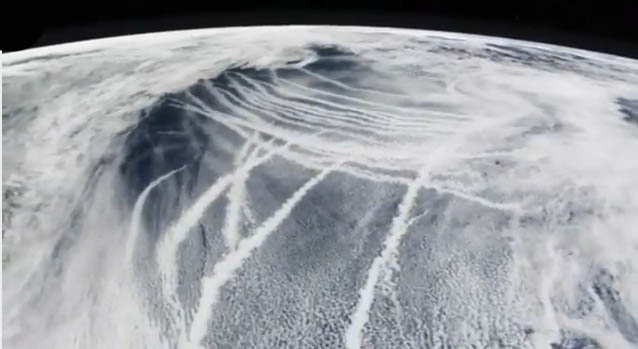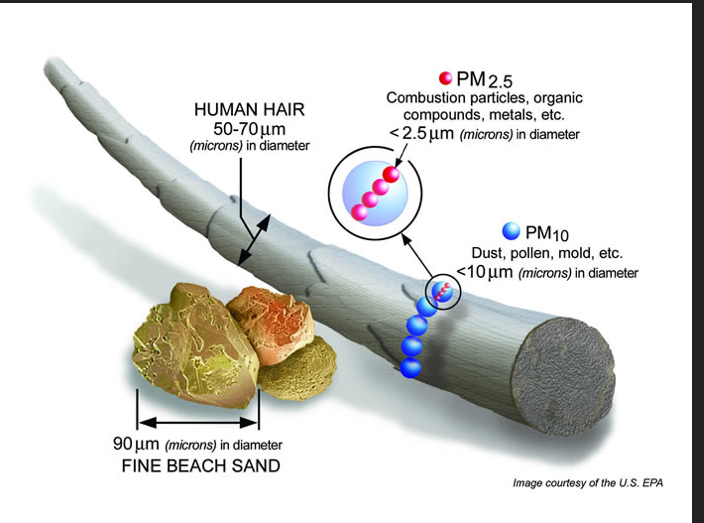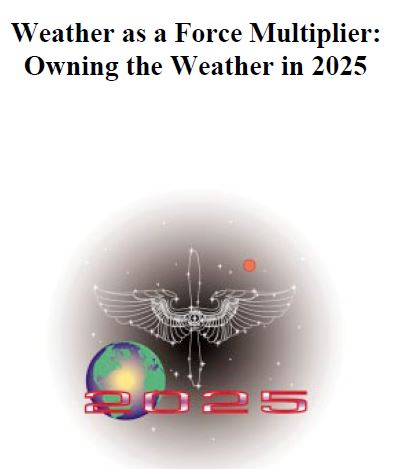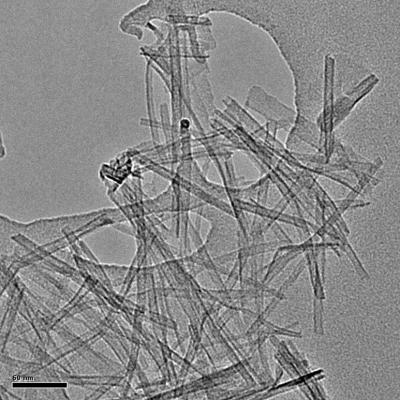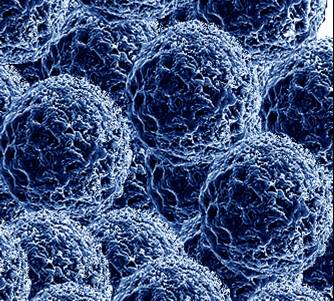Nano Aerosols and You
By William Thomas
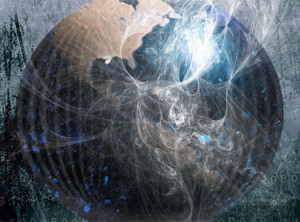
First, the almost good news: The 10-micron particles called for in the Hughes aerosol spray patent are not nano-size. Each microscopic 10-micron particle is 100th the diameter of a human hair. The bad news: Regardless of their inherent toxicity, all airborne particles 10-microns or smaller are classified “an extreme human health hazard” by the U.S. Environmental Protection Agency because of their propensity to invade and inflame heart tissue. Sometimes lethally.
Worse news (sorry): If you do not enjoy “traditional” geoengineering aerosols raining invisibly up your nose, you are definitely not going to like sniffing periodic dumps of programmable nanoparticles 80,000 times smaller than the width of a human hair.
SMART PARTICLES AND YOU
Under development since 1995, the weaponeer’s goal is to install microprocessors incorporating gigaflops computer capability into “smart particles” the size of a single molecule. Electronically networked in the air, thousands of sensors will eventually link into a single supercomputer no larger than a grain of sand.
Brought to you by the same military-corporate-congressional-banking complex that runs America’s foreign “urban renewal” projects – otherwise known as Permanent War-For-Profit –U.S. Military Inc. is preparing to unleash swarms of “smart” nanoparticles in its ongoing Eco War against the Earth and all creatures dwelling here.
WHO PROFITS FROM THIS?
Raytheon Corp for one. The original owner of Bernard Eastlund’s HAARP patent, the world’s fourth largest weapons maker also owns General Dynamics– the biggest manufacturer of Unmanned Aerial Vehicles. Raytheon reportedly reports the weather for NOAA through its Advanced Weather Information Processing System computers linked directly with its weather drones. According to Brendan Bombaci of Durango, Colorado, NOAA has paid Raytheon more than $300 million for this “currently active, 10-year project.” Bombaci goes on to describe the Joint Environmental Toolkit used by the USAF in its integrated “Weather Weapon System”.
“GLOBAL WARMING MITIGATION”
The latest nano-weather control jargon is replete with such benign-sounding terms as “Microelectric Mechanical Sensors” and “Global Environmental Mechanical Sensors”. But according to a flier produced by the U.S. Military Inc. called Military Progress, “The green light has been given” to disperse swarms of these wirelessly-networked nano-bots into the atmosphere via remotely-controlled UAV drones for “global warming mitigation.”
These robot sprayers include the U.S. Army’s Tactical Unmanned Aerial Vehicles and the U.S. Air Force’s own Global Hawks and Predators. The UAVs “are slated to deploy various payloads for weather warfare,” Military Progressasserts:
NANO RAIN
Threatening to further unhinge an increasingly heat-stressed atmosphere, more nano-size aerosols can be crammed into a small robot plane than all the conventional weather mod chemicals packed into a tanker the size of a DC-10.
According to the air force weather modification study, Owning The Weather In 2025, swarms of nano machines will be dropped into hurricanes and other weather systems to blend with storms and report real time weather data to each other and a larger sensor network.
The air force report boasts that nano-aerosols “will be able to adjust their size to optimal dimensions for a given seeding situation and make adjustments throughout the process.” Instead of being sprayed into the air at the mercy of the winds aloft – as is the fate of conventional geoengineering aerosols – nano-size versions will be able to “enhance their dispersal” by “adjusting their atmospheric buoyancy” and communicating with each other as they steer themselves in a single coordinated flock within their own artificial cloud.
Advanced nano aerosols will even “change their temperature and polarity to improve their seeding effects,” the air force predicts. Ultimately, these “smart particles” will then be used to increase or decrease the storm’s size and intensity – and “steer” it to “specific targets”.
[Daily Texan July 30/07]
POTATOHEAD
 Rutgers University scientist J. Storrs Hall loves nano weather bots. “Interconnected, atmospherically buoyant, and having navigation capability in three dimensions – clouds of microscopic computer particles communicating with each other and with a control system, could provide tremendous capability,” Hall enthuses.
Rutgers University scientist J. Storrs Hall loves nano weather bots. “Interconnected, atmospherically buoyant, and having navigation capability in three dimensions – clouds of microscopic computer particles communicating with each other and with a control system, could provide tremendous capability,” Hall enthuses.
“It is potentially relatively inexpensive to do,” Hall hallelujahs. “About the same price per pound as potatoes.”
How can high-tech nano chips be cheaper than potato chips?
Answer: Nano particles are self-replicating. That is, these ultra-miniature self-assembling machines can be made to reproduce themselves until programmed to stop.
Hopefully.
Maybe.
Sometimes.
US WEATHER FORCES
Owning The Weather goes on to predict how the Earth-tinkering USAF will “manage and employ a weather-modification capability by the Weather Force Support Element.”
This “Weather Force” will feed real-time updates from swarms of nano-size “smart sensors” into a super-duper computer to model developing weather patterns. The weather warriors will then plan and fly follow-on missions as needed. Thus, the blue-suiters boast, “the total weather-modification process becomes “a real-time loop of continuous, appropriate, measured interventions, and feedback capable of producing desired weather behavior.”
If the notion of tracking and modifying weather systems in real time seems risky, just wait. Around the next cloud corner are coming swarms of airborne nano-bots intended to “optimize” wind dispersal patterns for germ warfare. And geoengineering aerosols.
But as always when tinkering with something as complicated and intricately interlinked as an M-Class planet, there are a few hitches…
“Advances in the science of chaos are critical to this endeavor,” the air force noted.
ATMOSPHERIC CHAOS
After I visited the world’s foremost experts in Chaos Theory at the Santa Fe Institute – and as rain-soaked readers on forecast “sunny” days can attest – what is now called Complexity Theory cannot yet predict the behaviour of systems as complex and ever-changing as weather.
Because they cannot be graphed and predicted in a cause-and-effect straight line, chaotic weather processes thrown into unexpected trajectories by butterflies over Beijing refuse to be neatly modeled.
“Partly cloudy with a chance of chaos,” reporter William Harris remarks. Just a few forecasting factors include the planet’s rotation in space, uneven solar heating and air pressure differentials – even how the ever-changing phases from ice to water or water to vapour affect energy flows.
“Small changes in any one variable in any one of these complex calculations can profoundly affect future weather,” Harris reminds us. “Because of chaos, there is a limit to how accurate weather forecasts can be.”
Edward Lorenz, father of Chaos Theory and the Butterfly Effect, set this limit at two weeks.
“We sustain higher accuracy out to two to three days in advance; then it starts dropping off faster at days six through eight,” adds Louis Uccellini. The director of the National Weather Service goes on to observe that computations capable of dividing the world into small measurable segments demands a staggering electronic infrastructure and an “ensemble” of computer models merging various solutions. [Washington Post Apr 15/03]
Even then, the weather-forming troposphere and it’s interactions with continent-size land masses, an ocean covering three-quarters of this planet, an aerosol-compromised stratosphere and an electrically active, HAARP-heated ionosphere – all combine to produce frequent “non-linear” surprises.
This means that deploying aerosols to further pull and poke at an increasingly chaotic atmosphere can only result in a cascade of responses as unpredictable as misplaced monsoons and baked clay in the Sahel. Or the American Southwest. Just ask the rulers of Beijing, whose two overenthusiastic attempts at snowmaking twice brought that city to a standstill.
Chaos and Complexity Theory show that small atmospheric inputs can result in surprisingly large outputs. Even with self-correcting algorithms and super-computers using fuzzy logic to crunch Niagaras of data streaming in from millions of miniaturized sensors, blue sky nano-fantasies are bound to have “unexpected consequences”. Just like conventional aluminum oxide and barium aerosols, which – oops! – vacuum the remaining moisture out of nearly dry skies, resulting in even more severe and prolonged draught. Or the new ice nucleation aerosols being deployed across the USA to engineer heavy dumps of tree-snapping, cement-like snow in temperatures far above freezing.
But trees, plants and pets are not the only “collateral damage”.
The “chemtrails” we are all too familiar with after a 15-year dose continue to inflict eye infections, nosebleeds, skin sores, muscle pain, chronic exhaustion, weakened immunity, acute asthma and allergies, short-term memory loss and heart attacks on people in more than a dozen countries. [Chemtrails Confirmed 2010 by William Thomas]
Aluminum oxide impacts more than the atmosphere. The BBC reported a furor among Italians complaining of illness after allied warplanes dropped radar-scattering aluminum chaff upwind over nearby Yugoslavia during intense Depleted Uranium air strikes there.
The Italians had their medical facts right. Aluminum is a neurotoxin capable of dulling concentration and reasoning ability. By blocking nerve impulses from being properly conducted to and from the brain, dizziness, memory loss, impaired coordination, involuntary tremors, speech disorders and a loss of balance and energy are also cited in medical texts as indicators of aluminum poisoning.
“At one time it was thought to precipitate Alzheimer’s disease, but more recent research has shown it is almost certainly unrelated. There is little evidence for chemical toxicity or for effects at levels below the nuisance dust limit,” MD Dan Woodard points out.
But calcium-leaching aluminum ingestion is linked to osteoporosis, as well as gastrointestinal problems, weak and acing muscles, headaches, lethargy, fatigue and flu-like symptoms that leave the body vulnerable to opportunistic infections.
And there is no Recommended Daily Requirement for ingesting toxic barium sprayed over watersheds.
But it does not take chemical poisoning to make people exposed to aerosol fallout very ill indeed. Basing recent conclusions on more than 3,000 new health studies published since 1997, the EPA warns of a strong link between dust-size particles and “tens of thousands of deaths annually from both respiratory and coronary disease,” reports the New York Times. [New York Times Oct 14/06]
Two key studies from the early 1990’s by the Harvard School of Public Health and the American Cancer Society found strong links between high levels of small particles and a rise in death rates. In an article headlined, “Tiny Particles Can Kill” the New Scientist pointed to findings among adults in six cities over 16 years, which found that “city-dwellers in Europe and the U.S. are dying young because of microscopic particles in the air.” [New Scientist Aug 5/00]
According to the LA Times, microscopic aerosols motes “are able to infiltrate the tiniest compartments in the lungs and pass readily into the bloodstream” – where they can migrate to inflame tissues and cells. Particles in the lower size range called for by the Hughes aerosol spray patent are “most strongly tied to illness and early death, particularly in people who are already susceptible to respiratory problems.”
When 10-micron particles are inhaled into the lungs, “they are able to penetrate into the cells themselves,” says Dr. Ralph Delfino, an epidemiologist at UC Irvine, who helped conduct the latest study.
“After they reach the heart, the particles are thought to cause a stress reaction in cells, producing inflammation that contributes to heart disease. The particles also may cause blood clots,” the LA Times reported. [Los Angeles Times Dec 29/03]
“Exposure to a class of airborne pollutants known as Particulate Matter is an environmental health risk of global proportions,” declare Verones and Oortgiesen of the EPA’s Neurotoxicology Division. “PM is thought to initiate and/or exacerbate respiratory disorders, such as asthma and… and is epidemiologically associated with causing death in the elderly, and those with pre-existing respiratory, or cardiopulmonary disease.” [Health Risks Of Aerosoled Particulates PubMed Abstract; Neurogenic Inflammation And Particulate Matter (PM) Air Pollutants Neurotoxicology Division, US EPA]
Yet, under intense political pressure, the EPA went on to reject recommendations by its own Clean Air Scientific Advisory Council urging tighter federal standards regulating 10 micron particles. [New York Times Oct 14/06]
If particulate fallout 10 microns or smaller results in a 5% increased death rate within 24 hours, what’s in store for us with the new nano-version?
Nano-researcher Jim Giles describes nanoparticles as “tiny lumps of matter that… can travel to the brain after being inhaled. [Nature.com Jan 5/04]
Specifically, inhaled nanoparticles make a beeline for the olfactory bulb, an area of the brain that deals with smell. They tend to accumulate and clump there. A surprised toxicologist at the University of Edinburgh, Ken Donaldson, says, “I would never have thought of looking for inhaled nanoparticles in the brain.”
U. of Edinburgh researchers are also looking at the effects of nanoparticles on the liver.
As Dr. Celine Filippi observed, “Nanoparticles delivered into the lungs crossed the lung barrier and entered the blood. Particles in the blood can reach the liver, amongst other organs.”
Owning The Weather In 2025 and Hall’s Overview of Nanotechnology both appeared in 1995. Since its Frankenstein infancy, nanotech has gone exponential. [nanotech-now]
HANK CALLS
Right on cue, my trusted inside informant I’ve dubbed “Hank” called. The term “nano-chemtrails” on my website had caught his attention.
“They have them,” he confirmed. The U.S. Air Force has added nanoparticles to the aerosol mix and sprayed them into the air to demonstrate “proof of concept.“ According to this insider, the USAF has already sprayed tens of tonsof nanoparticles. Since it would take of bundle of 80,000 human hairs to make a single nanoparticle… “tens of tons” goes a long, long way.
Fortunately for all air-breathers, most of this experimental nanocrap is still circulating overhead, attached to molecules of oxygen by O2’s ionic charge. With nanoparticles made buoyant by piggybacking on oxygen particles, “you can deploy them out of a plane to stay in the stratosphere – or any other atmospheric strata,” Hank went on.
“Everything is frequency. The higher frequency stuff is higher up. HAARP can ping them at a specific frequency. The problem they’re having now is the particles are microscopic and have a mind of their own. Computer programmable nanoparticles have been made. They do exist. Others act without computer control.”
Each aerial “laydown” of nanoparticles is so buoyant, “it travels worldwide. Some of it comes down. Whatever it’s exposed to up there it brings down here. We get exposed to it. We breathe it in, we ingest it…The blood-brain barrier is a one-way door.” [New York Times Oct 14/06; Neurotoxicology Division, US Environmental Protection Agency; Space.com Oct 31/05; globalresearch.ca Oct 21/07; Chemtrails Confirmed; Weather as a Force Multiplier: Owning The Weather 2025; interviews with military insider]
Slam the door on geoengineering now!

